Modern History Playlist
19 chapters • 0 completed
Advent of Europeans in India
9 topics
Decline of the Mughal Empire
7 topics
Emergence of Regional States
11 topics
Expansion and Consolidation of British Power
19 topics
British Government & Economic Policies (1757–1857)
4 topics
Social Reform Movements
20 topics
People’s Resistance before 1857
3 topics
The revolt of 1857
6 topics
Growth of Nationalism and Moderate Phase of Congress
6 topics
British Administration in India
7 topics
Era of Militant Nationalism (1905-1909)
5 topics
First Phase of Revolutionary Activities(1907-1917)
8 topics
India’s Response to First World War and Home Rule Movement
4 topics
Emergence of Gandhi
6 topics
Non-Cooperation Movement and Khilafat Movement
7 topics
Emergence of Swarajists, Socialist Ideas, Revolutionary Activities
5 topics
Struggle For Swaraj: 1928-1935
13 topics
Period from 1935-42
9 topics
Period from 1942-47
22 topics
Chapter 4: Expansion and Consolidation of British Power
Chapter TestBackground
The decline of Mughal authority, rise of regional states, and European rivalry created conditions for British expansion.
The decline of Mughal authority, rise of regional states, and European rivalry created conditions for British expansion.
Factors Behind British Expansion
| Factor | Explanation |
|---|---|
| Decline of Mughals | Central authority collapsed after Aurangzeb |
| Regional States | Strong but divided; lacked unity |
| European Rivalry | French vs British; British won Carnatic Wars |
| Military & Naval Strength | Disciplined army, modern navy |
| Economic Motivation | Access to revenue and resources |
| Indian Disunity | Betrayals and rivalries among Indian rulers |
Fun Facts
The English East India Company was originally chartered by Queen Elizabeth I in 1600.
French East India Company was backed directly by the state, unlike the English.
Mains Key Points
Prelims Strategy Tips
Battle of Plassey (1757)
First major victory of the British under Robert Clive against Nawab Siraj-ud-Daulah.
First major victory of the British under Robert Clive against Nawab Siraj-ud-Daulah.
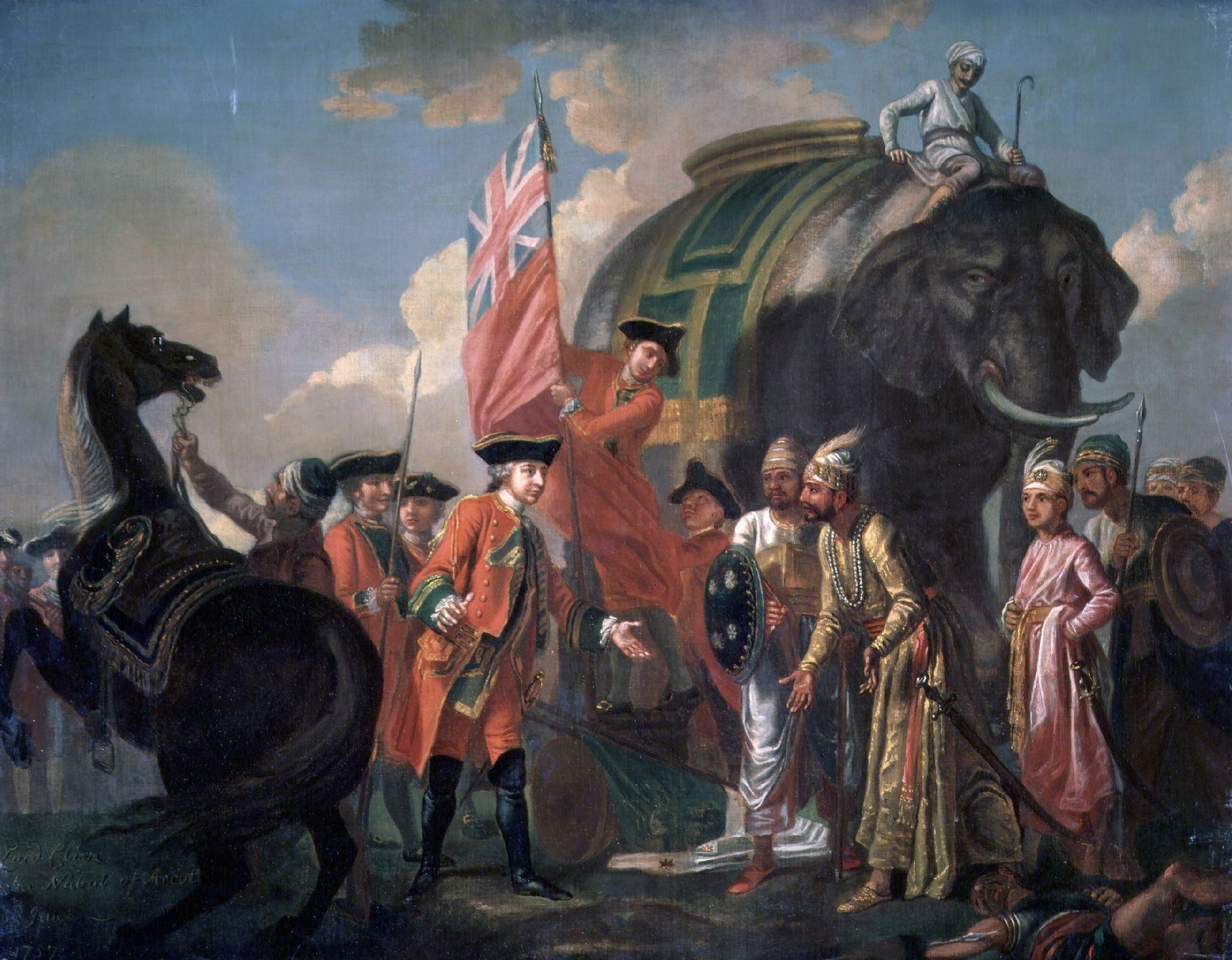
Key Aspects of Plassey
| Aspect | Detail |
|---|---|
| Cause | Nawab opposed misuse of privileges and fortification |
| British Leader | Robert Clive |
| Betrayal | Mir Jafar sided with British |
| Outcome | British control over Bengal; foundation of rule |
Fun Facts
The battle lasted only a few hours; real cause was treachery.
Clive returned to England enormously wealthy after Plassey.
Mains Key Points
Prelims Strategy Tips
Battle of Buxar (1764)
British defeated combined forces of Mir Qasim, Shuja-ud-Daula (Awadh), and Shah Alam II.
British defeated combined forces of Mir Qasim, Shuja-ud-Daula (Awadh), and Shah Alam II.
Battle of Buxar (1764)
| Forces | Leader | Result |
|---|---|---|
| Mir Qasim (Bengal) | - | Defeated |
| Shuja-ud-Daula (Awadh) | - | Defeated |
| Shah Alam II (Mughal) | - | Accepted Company authority |
| British | Hector Munro | Victory |
Fun Facts
Buxar was more decisive than Plassey in establishing Company power.
Mains Key Points
Prelims Strategy Tips
Policies of Expansion
Subsidiary Alliance and Doctrine of Lapse enabled annexation of Indian states without wars.
Subsidiary Alliance and Doctrine of Lapse enabled annexation of Indian states without wars.

Expansionist Policies
| Policy | Introduced by | Example States Annexed |
|---|---|---|
| Subsidiary Alliance | Lord Wellesley | Hyderabad, Awadh, Mysore |
| Doctrine of Lapse | Lord Dalhousie | Jhansi, Nagpur, Satara |
| Misgovernment Doctrine | Lord Dalhousie | Awadh (1856) |
Fun Facts
Doctrine of Lapse deeply angered Rani Lakshmibai of Jhansi.
These policies were direct causes of 1857 revolt.
Mains Key Points
Prelims Strategy Tips
Anglo-Mysore Wars (1767–1799)
Four wars fought between the British and Mysore under Hyder Ali and Tipu Sultan; ended with Tipu’s death in 1799.
Four wars fought between the British and Mysore under Hyder Ali and Tipu Sultan; ended with Tipu’s death in 1799.
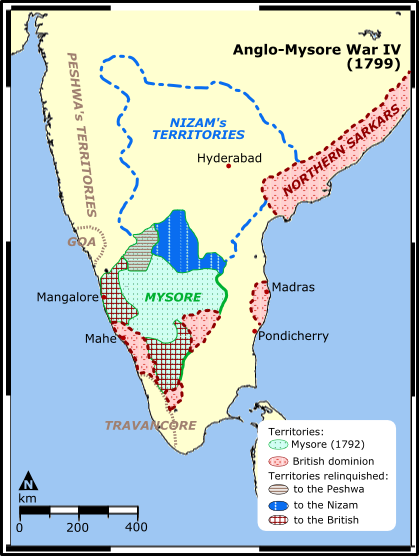
Anglo-Mysore Wars
| War | Years | Key Events | Outcome |
|---|---|---|---|
| First | 1767–1769 | Hyder Ali allied with Marathas & Nizam against British | Treaty of Madras (restored territories) |
| Second | 1780–1784 | Hyder Ali died; Tipu continued war | Treaty of Mangalore (restored prisoners/territories) |
| Third | 1790–1792 | British allied with Marathas & Nizam; Cornwallis defeated Tipu | Treaty of Seringapatam (Tipu ceded half territory, hostages given) |
| Fourth | 1799 | Siege of Seringapatam; Tipu killed | Mysore placed under Wodeyar dynasty as British ally |
Fun Facts
Tipu used iron-cased rockets in war; considered precursor to modern rockets.
Tipu had alliances with French and Ottoman Empire; even corresponded with Napoleon.
His toy, 'Tipu’s Tiger', is preserved in the Victoria and Albert Museum, London.
Mains Key Points
Prelims Strategy Tips
Anglo-Maratha Wars (1775–1818)
Three wars between the British and the Marathas ended with the fall of the Maratha Confederacy and British paramountcy in India.
Three wars between the British and the Marathas ended with the fall of the Maratha Confederacy and British paramountcy in India.
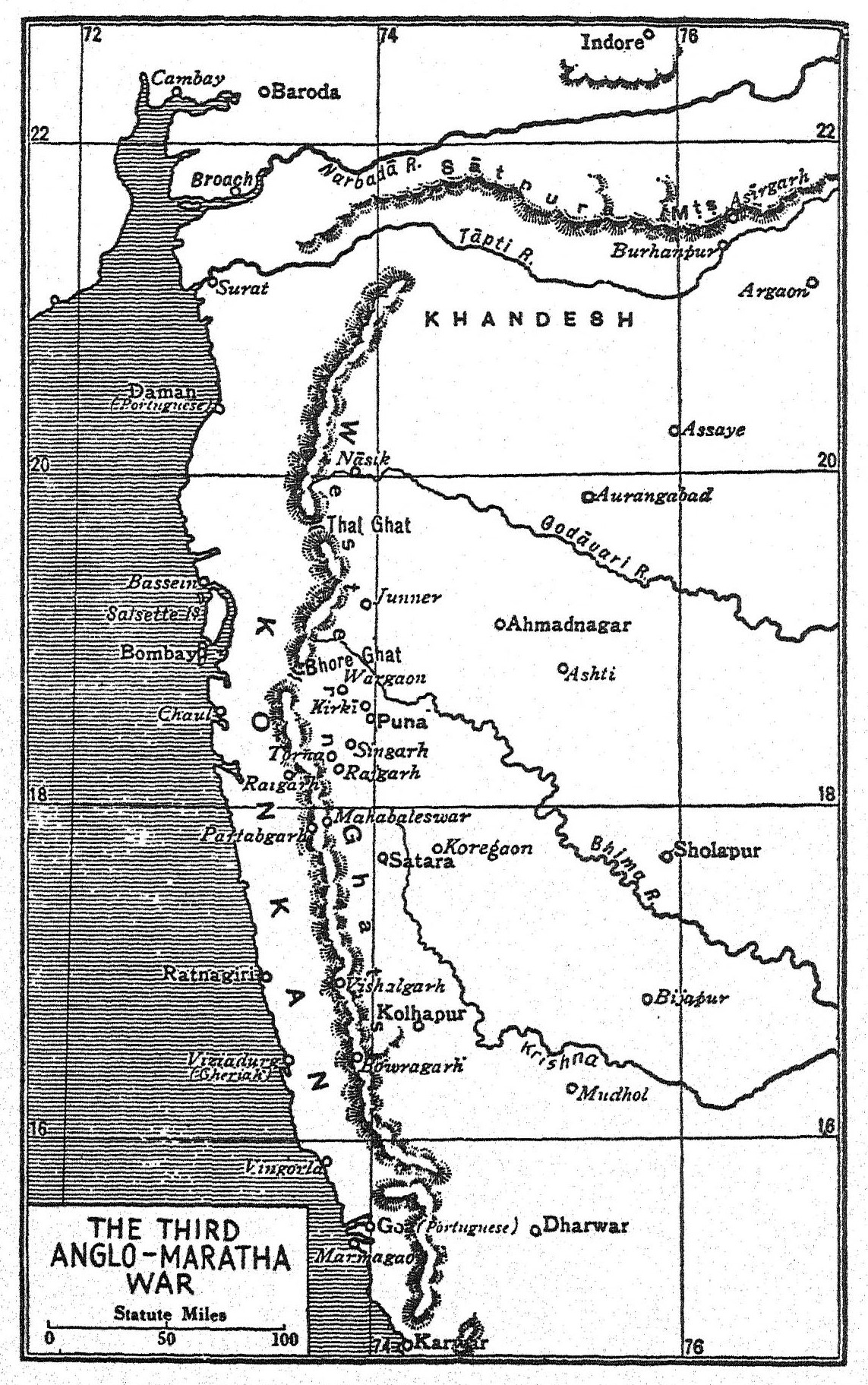
Anglo-Maratha Wars
| War | Years | Causes | Outcome |
|---|---|---|---|
| First | 1775–1782 | Succession dispute after death of Madhav Rao I; British supported Raghunath Rao (Raghoba) | Treaty of Salbai (1782): Status quo restored; British retained Bombay Salsette, recognised Madhav Rao II as Peshwa |
| Second | 1803–1805 | Maratha chiefs (Scindias, Holkars, Bhonsles) divided; British exploited divisions | British victory under Wellesley; captured Delhi; Treaty of Rajghat with Scindias |
| Third | 1817–1818 | Peshwa Baji Rao II attacked British Resident at Pune; rising Maratha discontent | British crushed Marathas; Peshwa abolished; territories annexed; Marathas confined to princely states |
Fun Facts
Arthur Wellesley (later Duke of Wellington, victor of Waterloo) fought in Second War.
Maratha confederacy included Scindias, Holkars, Gaekwads, Bhonsles — often quarrelling with each other.
Baji Rao II, last Peshwa, lived in exile in Bithoor near Kanpur.
Mains Key Points
Prelims Strategy Tips
Conquest of Sindh (1843)
Sindh was annexed by the British in 1843 after Charles Napier defeated the Talpur Amirs at the Battle of Miani.
Sindh was annexed by the British in 1843 after Charles Napier defeated the Talpur Amirs at the Battle of Miani.
Conquest of Sindh
| Event | Year | Outcome |
|---|---|---|
| Treaties with Amirs | 1832–1839 | Allowed British trade & passage |
| First Afghan War | 1839–42 | British wanted Sindh as supply base |
| Battle of Miani | 1843 | Charles Napier defeated Talpur Amirs |
| Battle of Dubbo | 1843 | Confirmed British supremacy |
| Annexation | 1843 (formalised 1847) | Sindh integrated into Bombay Presidency |
Fun Facts
After the conquest, Charles Napier reportedly sent the message: 'Peccavi' (Latin for 'I have sinned/Sindh').
The Indus River became crucial for British trade and military movement.
Mains Key Points
Prelims Strategy Tips
Conquest of Punjab (1845–1849)
Two Anglo-Sikh Wars ended Sikh sovereignty and led to annexation of Punjab into British India in 1849.
Two Anglo-Sikh Wars ended Sikh sovereignty and led to annexation of Punjab into British India in 1849.
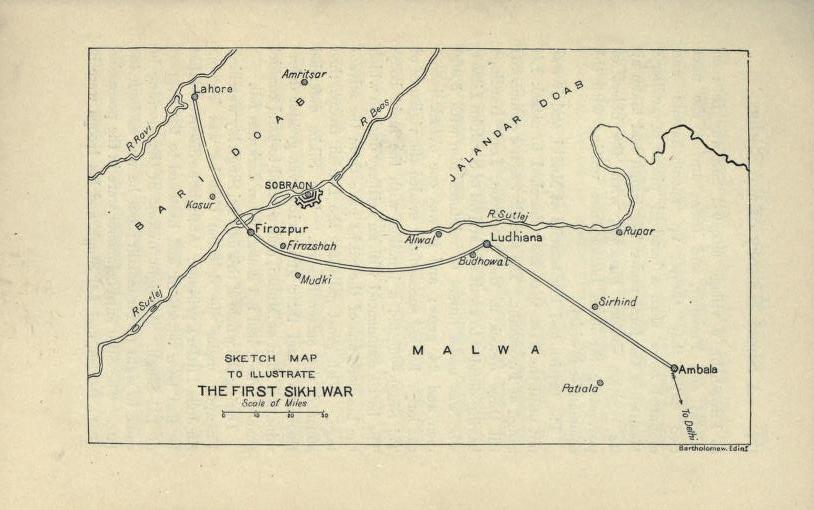
Anglo-Sikh Wars
| War | Years | Cause | Outcome |
|---|---|---|---|
| First Anglo-Sikh War | 1845–46 | Instability after Ranjit Singh’s death; Sikh army crossed Sutlej | British victory; Treaty of Lahore (1846) → heavy indemnity, territory ceded (Jammu, Kashmir, Jullundur Doab) |
| Second Anglo-Sikh War | 1848–49 | Revolts in Multan; Sikh chiefs resisted British expansion | British victory at Battle of Gujrat (1849); Punjab annexed |
Fun Facts
The famous Koh-i-Noor diamond was taken from Punjab after annexation (later gifted to Queen Victoria).
Ranjit Singh never allowed British to station troops in Punjab during his lifetime.
Mains Key Points
Prelims Strategy Tips
Overview of Dalhousie’s Annexations
Lord Dalhousie (Governor-General, 1848–1856) expanded British India using Doctrine of Lapse and 'misgovernment'.
Lord Dalhousie (Governor-General, 1848–1856) expanded British India using Doctrine of Lapse and 'misgovernment'.
Major Annexations under Dalhousie
| State | Year | Grounds | Notes |
|---|---|---|---|
| Satara | 1848 | Doctrine of Lapse | First major annexation under Dalhousie |
| Jhansi | 1853 | Doctrine of Lapse | Rani Lakshmibai denied right to adopt heir |
| Nagpur | 1854 | Doctrine of Lapse | Rich cotton-producing region annexed |
| Awadh | 1856 | Misgovernment | Nawab Wajid Ali Shah deposed; cause of 1857 revolt |
Fun Facts
Rani Lakshmibai of Jhansi famously resisted in 1857 saying, 'Main apni Jhansi nahi doongi'.
Dalhousie’s aggressive policy earned him both fame (for British) and infamy (for Indians).
Mains Key Points
Prelims Strategy Tips
Annexation of Satara (1848)
Satara was the first state annexed under Doctrine of Lapse in 1848.
Satara was the first state annexed under Doctrine of Lapse in 1848.
Prelims Strategy Tips
Annexation of Jhansi (1853)
Jhansi was annexed in 1853 when Dalhousie rejected Rani Lakshmibai’s adopted heir.
Jhansi was annexed in 1853 when Dalhousie rejected Rani Lakshmibai’s adopted heir.
Fun Facts
Lakshmibai became a symbol of resistance in 1857 revolt.
Prelims Strategy Tips
Annexation of Nagpur (1854)
Nagpur was annexed under Doctrine of Lapse in 1854 after death of ruler without a male heir.
Nagpur was annexed under Doctrine of Lapse in 1854 after death of ruler without a male heir.
Prelims Strategy Tips
Annexation of Awadh (1856)
Awadh was annexed in 1856 by Lord Dalhousie on grounds of 'misgovernment'.
Awadh was annexed in 1856 by Lord Dalhousie on grounds of 'misgovernment'.
Fun Facts
Wajid Ali Shah was exiled to Calcutta where he promoted Kathak and poetry.
Prelims Strategy Tips
Anglo-Bhutanese Relations
Relations between British India and Bhutan were marked by border disputes, raids, and culminated in the Anglo–Bhutanese War (1864–65).
Relations between British India and Bhutan were marked by border disputes, raids, and culminated in the Anglo–Bhutanese War (1864–65).
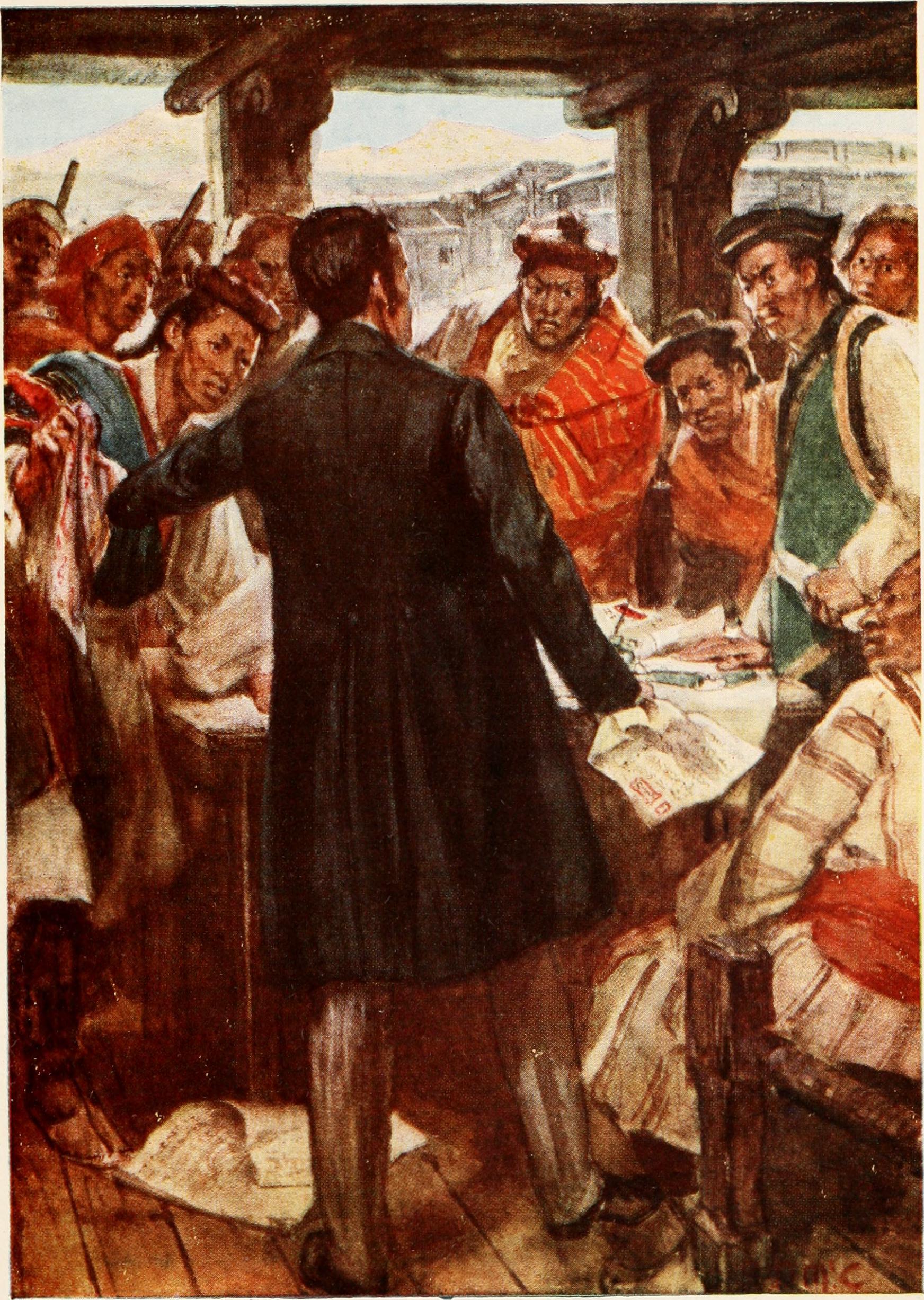
Anglo-Bhutanese War (1864–65)
| Event | Details |
|---|---|
| Cause | Bhutanese raids into Assam and Bengal; failure of negotiations |
| British Campaign | Invaded Bhutanese territory (Dooars) in 1864 |
| Resistance | Bhutanese fought bravely but lacked modern weapons |
| Treaty of Sinchula (1865) | Bhutan ceded Dooars, parts of Assam and Bengal Duars; received annual subsidy |
Fun Facts
Despite defeat, Bhutan retained its independence unlike many other Indian neighbours.
The annual subsidy given by the British was a rare case of British paying a Himalayan kingdom.
Mains Key Points
Prelims Strategy Tips
Anglo-Nepalese Relations
The Anglo–Nepalese (Gurkha) War (1814–1816) ended with the Treaty of Sugauli, reducing Nepal’s territory but preserving its sovereignty.
The Anglo–Nepalese (Gurkha) War (1814–1816) ended with the Treaty of Sugauli, reducing Nepal’s territory but preserving its sovereignty.
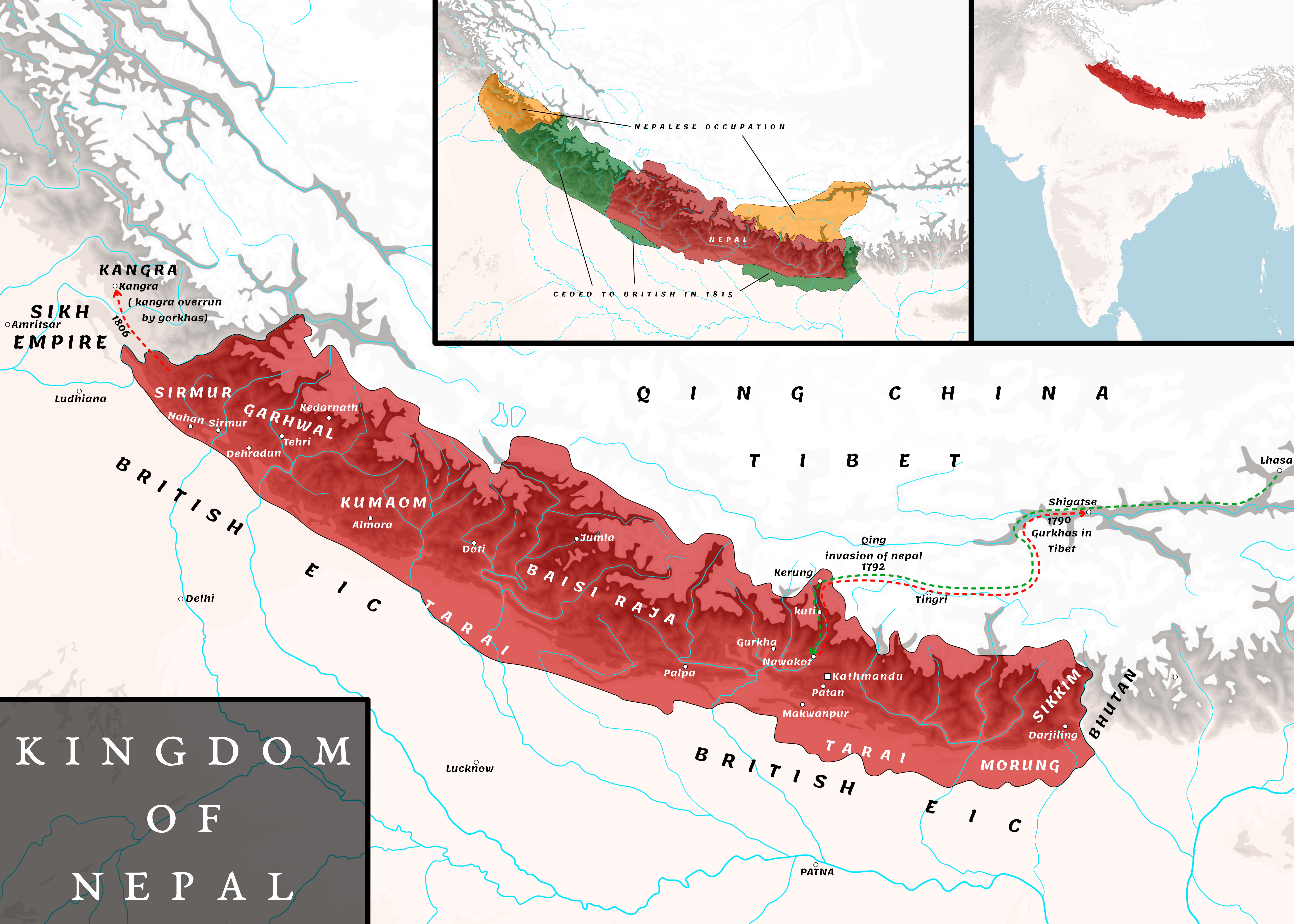
Anglo–Nepalese (Gurkha) War & Treaty of Sugauli
| Aspect | Details |
|---|---|
| War Period | 1814–1816 |
| Causes | Border disputes; Gorkha expansion into Kumaon, Garhwal, Terai |
| British Campaign | Led by General Ochterlony |
| Outcome | Nepal defeated; Treaty of Sugauli (1816) |
| Treaty of Sugauli | Nepal ceded Kumaon, Garhwal, Sikkim; accepted British Resident at Kathmandu; kept sovereignty |
Fun Facts
Despite defeat, Nepal retained sovereignty unlike many Indian states.
The Gorkhas’ bravery impressed the British; they were later recruited into the British Indian Army (Gurkha regiments).
Mains Key Points
Prelims Strategy Tips
Anglo-Burmese Relations & Wars
Three Anglo–Burmese Wars (1824–1886) resulted in the complete annexation of Burma into British India.
Three Anglo–Burmese Wars (1824–1886) resulted in the complete annexation of Burma into British India.
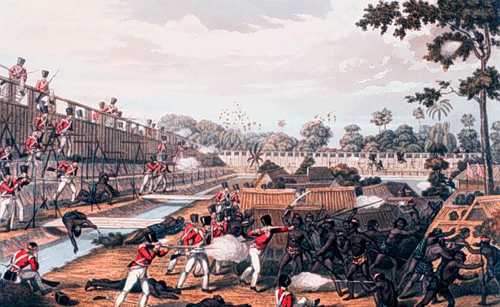
Anglo–Burmese Wars
| War | Years | Causes | Outcome |
|---|---|---|---|
| First Anglo–Burmese War | 1824–1826 | Burma expanded into Assam & Manipur; conflict with Company | Treaty of Yandabo (1826): Burma ceded Assam, Manipur, Arakan, Tenasserim; paid indemnity |
| Second Anglo–Burmese War | 1852 | Trade disputes; British merchants harassed at Rangoon | Lower Burma (Pegu) annexed; Rangoon under British control |
| Third Anglo–Burmese War | 1885–1886 | British accused King Thibaw of misrule and aligning with French | Annexation of Upper Burma; Burma became part of British India (1886) |
Fun Facts
The First Anglo–Burmese War was the costliest for the Company; expenses nearly bankrupted it.
King Thibaw, the last Burmese monarch, was exiled to Ratnagiri (Maharashtra, India).
Burma remained a province of British India until 1937, when it was separated.
Mains Key Points
Prelims Strategy Tips
Anglo-Tibetan Relations
Anglo–Tibetan relations were shaped by trade disputes, Tibet’s ties with China, and the British desire to check Russian influence. The 1903–04 Younghusband Expedition forced Tibet to sign a treaty with the British.
Anglo–Tibetan relations were shaped by trade disputes, Tibet’s ties with China, and the British desire to check Russian influence. The 1903–04 Younghusband Expedition forced Tibet to sign a treaty with the British.
Key Events in Anglo–Tibetan Relations
| Year | Event | Significance |
|---|---|---|
| 1792 | China–Tibet–Nepal context | China asserted suzerainty after Nepal–Tibet war |
| 19th century | British trade attempts | Repeatedly blocked by Tibet |
| 1903–04 | Younghusband Expedition | British forced entry into Lhasa |
| 1904 | Treaty of Lhasa | Opened Tibet to trade, indemnity imposed, restricted foreign relations |
Fun Facts
The Younghusband expedition caused heavy Tibetan casualties despite poor Tibetan weaponry.
The Dalai Lama fled to Mongolia during the expedition.
Though Tibet signed the 1904 treaty, it was later modified by the British–Chinese convention (1906).
Mains Key Points
Prelims Strategy Tips
Anglo-Afghan Relations & Wars
Three Anglo–Afghan Wars (1839–1919) defined British policy in the northwest frontier; Afghanistan acted as a buffer between British India and Russian influence.
Three Anglo–Afghan Wars (1839–1919) defined British policy in the northwest frontier; Afghanistan acted as a buffer between British India and Russian influence.
Anglo–Afghan Wars
| War | Years | Causes | Outcome |
|---|---|---|---|
| First Anglo–Afghan War | 1839–1842 | British wanted to replace Dost Mohammad with Shah Shuja to counter Russian influence. | Initial British success, but disastrous retreat from Kabul (1842) → heavy British losses; Dost Mohammad restored. |
| Second Anglo–Afghan War | 1878–1880 | British feared growing Russian influence; demanded control of Afghan foreign policy. | Treaty of Gandamak (1879): Amir accepted British control over foreign affairs; British Resident placed in Kabul (later killed). |
| Third Anglo–Afghan War | 1919 | After WWI, Amanullah Khan sought full Afghan independence. | Treaty of Rawalpindi (1919): Afghanistan regained control over foreign policy; Britain recognized Afghan independence. |
Fun Facts
The 1842 retreat from Kabul left only one British survivor, Dr. William Brydon, reaching Jalalabad.
Afghanistan became a symbol of the 'graveyard of empires' due to repeated foreign failures.
After 1919, Afghanistan was the first country to establish diplomatic ties with Soviet Russia.
Mains Key Points
Prelims Strategy Tips
Policy of Ring Fence & Buffer State
The British first adopted the Policy of Ring Fence in the 18th century to protect Bengal, and later the Buffer State Policy in the 19th century to counter Russia in Central Asia.
The British first adopted the Policy of Ring Fence in the 18th century to protect Bengal, and later the Buffer State Policy in the 19th century to counter Russia in Central Asia.
Comparison: Ring Fence vs Buffer State
| Aspect | Ring Fence Policy | Buffer State Policy |
|---|---|---|
| Time Period | Late 18th century (Warren Hastings) | 19th century (Great Game era) |
| Region | Bengal and surrounding Indian states | Frontier regions (Afghanistan, Tibet, Nepal, Bhutan) |
| Objective | Defensive — protect Bengal revenues | Strategic — counter Russian expansion |
| Method | Alliances with Indian states (Awadh, Marathas) | Maintaining weak buffer states between India & rivals |
| Nature | Short-term, regional | Long-term, international (imperial strategy) |
Fun Facts
The term 'Ring Fence' was literally used by Warren Hastings in his correspondence.
Despite the buffer state idea, Britain had to fight three costly Anglo–Afghan Wars.
Mains Key Points
Prelims Strategy Tips
Chapter Complete!
Ready to move to the next chapter?
